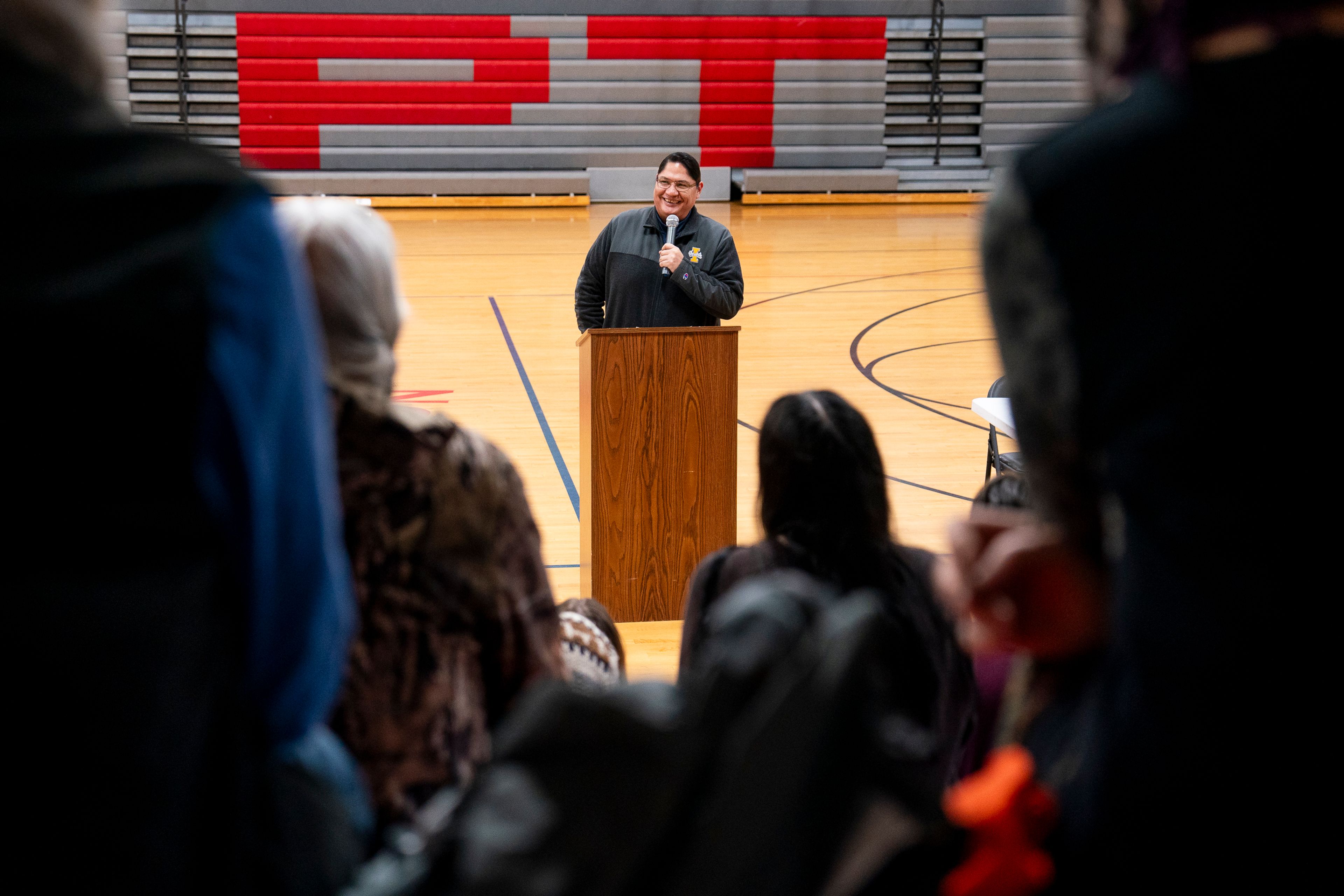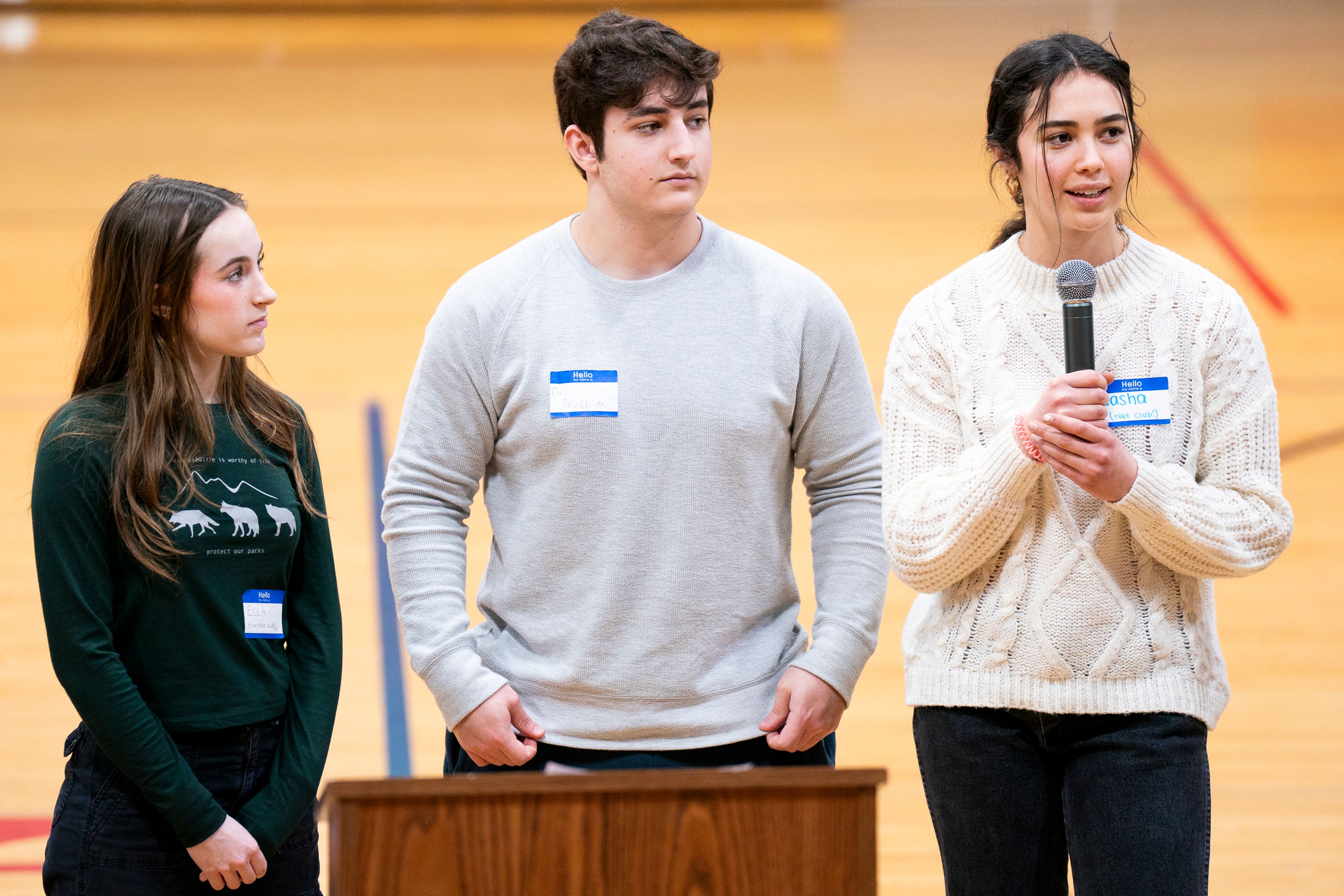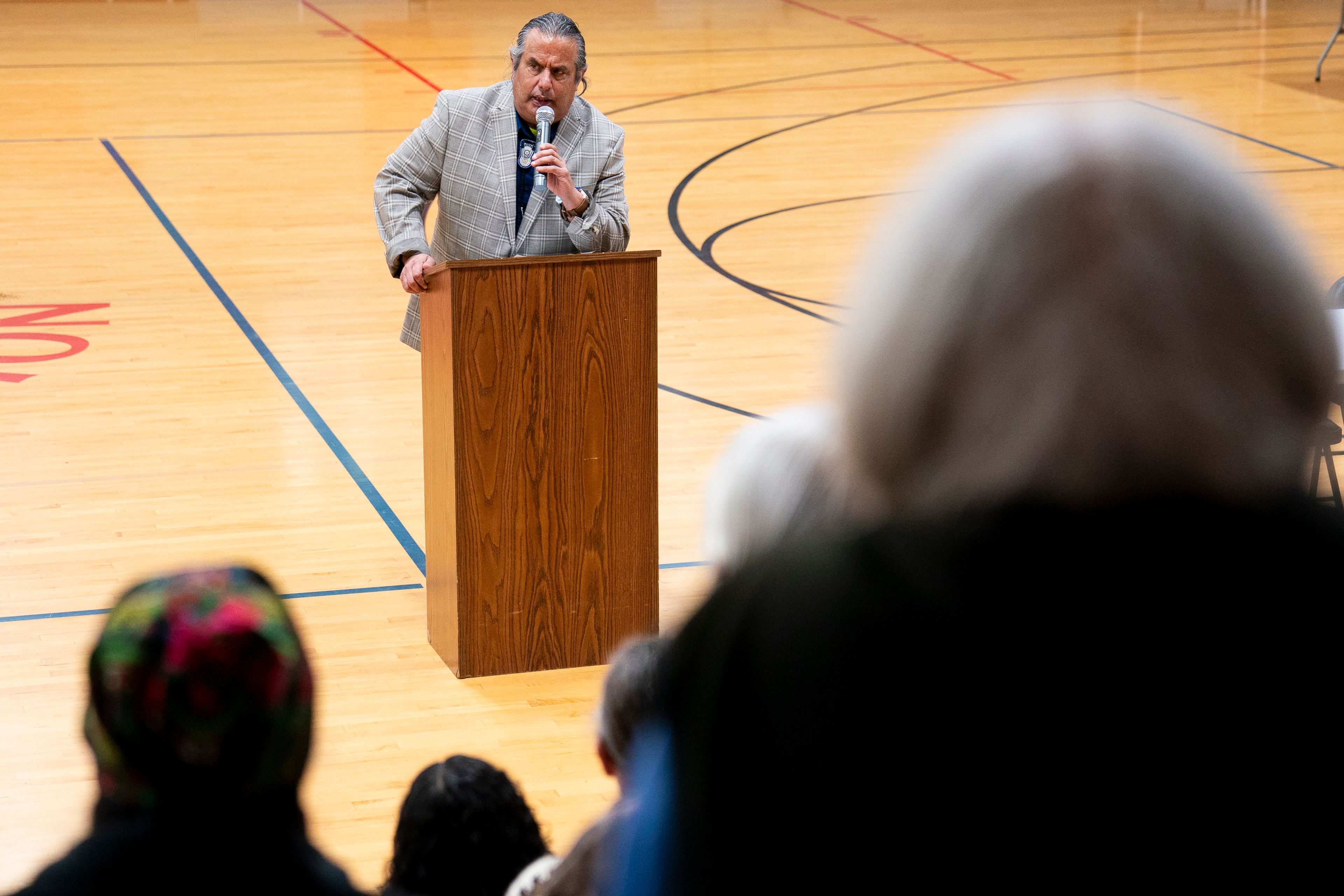Nez Perce Tribe honor the sacred wolf
Nez Perce and others celebrate wolf recovery, decry Idaho’s attempt to reduce the population
LAPWAI — Members of the Nez Perce Tribe stressed the interconnectedness of all life — human and wild — during a three-hour ceremony Saturday honoring the now decades-old return of wolves to Idaho and other northwest states.
While wolf recovery has been deemed one of the most high-profile conservation success stories of the past 50 years, many speakers said the work is not done and that wolves, especially those in Idaho, remain misunderstood, persecuted and under great threat.
“We are gathered here today for a very sacred animal: the wolf. He is very precious to the way of life,” said Chuck Axtel, a Nez Perce elder, during the Honor the Wolf ceremony at the Pi-Nee-Waus Community Center. “He takes the weak ones from the herds and builds up the strength of our elk. That is just the way the circle of life is.”
Nearly 30 years ago, Axtel with his late father Horace Axtel and others sang a welcome song and prayer to crated wolves on a tarmac of the airport at Missoula, Mont., before the animals captured in British Columbia, Canada, were released into central Idaho wilderness areas.
The tribe played a key role in wolf reintroduction back then and welcomed the animals as brothers. Without the tribe’s involvement, the reintroduction might not have happened.
Fearing impacts to livestock and game herds, Idaho officials fought the federal government’s wolf reintroduction plan and attempted to stymie it by passing a state law that forbade the Idaho Department of Fish and Game from assisting with the effort. Legislators and other leaders reasoned that without a local wildlife agency performing the day-to-day duties of reintroduction, it would stall.
But the Nez Perce Tribe stepped in and agreed to do the work. Samuel Penney, a member of the tribal council then and now, said it took a lot of work for the tribe to write a wolf plan and hire staff. He noted it was the first time a tribe played such an integral role in the recovery of a threatened species.
“There are just so many people who worked on it,” he said. “We have to make sure we continue to advocate for wolves and that they have a sustainable population.”
Idaho’s wolf population eventually reached a high of about 1,600 animals in dozens of packs. Wolves in Idaho, Montana, Wyoming and parts of Washington and Oregon, were eventually removed from federal protection.
When that happened, the tribe handed off management of the animals to the Idaho Department of Fish and Game. For the past several years the department has been working to reduce the number of wolves in the state. It has enacted liberal hunting and trapping seasons, reimbursed trappers for their expenses and hired contractors to shoot wolves from helicopters in places like the Lolo Zone in the upper Clearwater River basin. Last year, the population dropped by about 13% after being stable for years.
Julian Matthews, coordinator of Nimiipuu Protecting the Environment, a Nez Perce environmental group, and organizer of Saturday’s event lamented the state’s position.
“Idaho basically wants to get rid of them all,” said Matthews.
Members of the Teens Restoring the Environment, a student club at Boise’s Timberline High School, shares his concern. Their club sponsored a central Idaho wolf pack that was later eradicated.
“We are very frustrated with the way Idaho wolves are being managed,” said student Sasha Truax. “The fact that we reintroduced them to the state, brought them back and now we are putting them out again is very frustrating.”
Barker may be contacted at ebarker@lmtribune.com.













